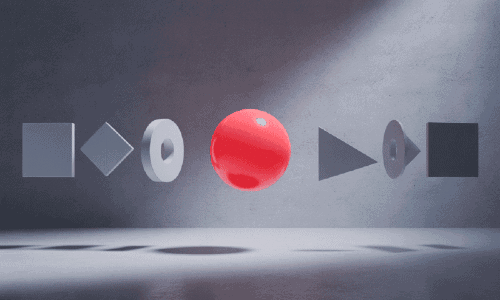Principles of Perception Chapter Notes | AP Psychology - Grade 11 PDF Download
Introduction
This chapter explains how we interpret sensory information to understand the world. It covers how our brain processes sensory data, uses past knowledge, and applies mental shortcuts. You'll learn about Gestalt principles, attention, and depth perception. These notes are simple and tailored for the AP Psychology exam.
Overviews: Perception
- Perception is the process of interpreting sensory information to understand the world around us.
- It combines bottom-up processing (starting with raw sensory data) and top-down processing (using prior knowledge to make sense of stimuli).
- Factors like mental frameworks (schemas), expectations (perceptual sets), context, and cultural influences shape how we perceive our environment.
- Gestalt principles explain how we organize visual information, while attention filters what we notice and process.
Influences on Perception
Bottom-Up vs. Top-Down Processing
Bottom-up processing starts with sensory information from our surroundings, whereas top-down processing is guided by what we already know and expect. Together, they shape how we perceive the world.
Key aspects of each type:
- Bottom-up processing:
- Starts with sensory input from the environment.
- Focuses on details and individual elements.
- Processes raw sensory data directly.
- Top-down processing:
- Uses prior knowledge and expectations.
- Relies on context and memory.
- Helps interpret unclear or ambiguous information.
Schemas and Perceptual Sets
- Schemas are mental frameworks that help us organize and interpret information based on experience. They grow more complex as we learn and develop.
- Perceptual sets are predispositions that shape how we interpret sensory input.
- They can:
- Make us see what we expect to see
- Cause selective attention to certain stimuli
- Lead to misinterpretations of unclear stimuli
- Be influenced by emotions and motivations
External Influences in Perception
Our surroundings and experiences heavily impact perception. Context can change how we interpret the same stimulus in different settings.
- Cultural Influences:
- Social norms and values
- Cultural expectations
- Communication styles
- Interpretation of symbols and gestures
- Personal Experiences:
- Create expectations
- Form biases
- Develop emotional associations
- Build knowledge frameworks
Gestalt Principles of Perception
Gestalt approach: We perceive whole patterns, not just individual parts. Explains how we organize visual information into meaningful patterns.
Key principles:
- Closure: Mentally completing incomplete shapes.
- Figure-ground: Separating objects from their background.
- Proximity: Grouping nearby elements together.
- Similarity: Grouping similar-looking elements.
Additional principles:
- Continuity: Seeing continuous patterns.
- Common fate: Grouping elements that move together.
- Good form: Organizing elements into simple, regular shapes.
Attention in Perception
Attention filters sensory input, allowing us to focus on relevant information while ignoring distractions.
Types of attention include:
- Selective Attention: Focusing on specific stimuli
- Divided Attention: Processing multiple stimuli at once
- Sustained Attention: Maintaining focus over time
Attention limitations can cause:
- Change blindness (missing major scene changes)
- Inattentional blindness (overlooking obvious stimuli due to focus elsewhere)
- Missing critical information
- Reduced accuracy in processing
Visual Perception Processes
 Visual Perception
Visual Perception
Binocular Depth Cues
Depth perception uses information from both eyes to judge distance and spatial relationships.
Key binocular cues are:
- Retinal Disparity: Differences between the images in each eye
- Convergence: Eyes turning inward for closer objects
Monocular Depth Cues
Monocular cues enable depth perception with one eye, vital for 2D images like photos or paintings.
These include:
- Relative Clarity: Distant objects appear hazier (e.g., far-off mountains)
- Relative Size: Objects appear smaller when farther away
- Texture Gradient: Details fade with distance (e.g., grass blends at a distance)
- Linear Perspective: Parallel lines seem to converge (e.g., railroad tracks)
- Interposition: Closer objects block farther ones (e.g., a person hiding part of a building)
Visual Perceptual Constancies
Perceptual constancies ensure stable perceptions despite changing sensory input, aiding object recognition and navigation.
The main types are:
- Size Constancy: Perceiving consistent size despite distance changes
- Shape Constancy: Recognizing objects from varying angles
- Brightness Constancy: Adjusting for different lighting conditions
Perception of Apparent Movement
Apparent movement occurs when static images or stimuli create an illusion of motion, a principle used in visual media.
Key types include:
- Stroboscopic Movement: Motion from rapid still images (e.g., flipbooks)
- Phi Phenomenon: Illusion of movement between stationary stimuli
These principles underpin:
- Film and animation
- Digital displays
- Electronic signage
- Visual effects
|
35 docs
|
FAQs on Principles of Perception Chapter Notes - AP Psychology - Grade 11
| 1. What is the difference between bottom-up and top-down processing in perception? |  |
| 2. How do schemas affect our perception? |  |
| 3. What are perceptual sets, and how do they influence our perception? |  |
| 4. What are the Gestalt principles of perception? |  |
| 5. How do visual perceptual constancies work? |  |















